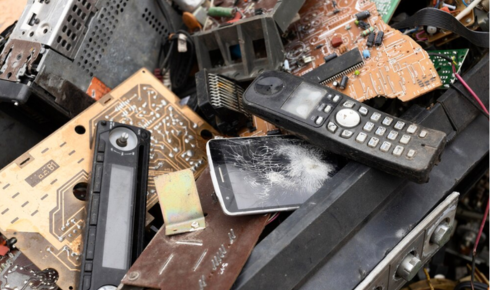As technology keeps advancing, our piles of unused electronics keep growing. From old chargers to TVs to laptops, every household and workplace has tech equipment lying around. Have you ever wondered what happens to all the tech waste once we throw it out? Most of it ends up in landfills, polluting the environment and deteriorating the quality of life. This is where electronic waste recycling comes in!
Electronic waste recycling, or e-waste recycling, is the process of extracting valuable materials by shredding the e-waste into tiny particles. The salvaged pieces are used to manufacture new electronic appliances.
Let’s take a closer look at e-waste recycling, why it matters, and how to choose a reliable e-waste recycling partner.
Why E-waste Recycling Matters
Did you know 50 to 60 million tons of e-waste are generated every year? This is an alarming amount and can do considerable damage if e-waste is not properly handled. E-waste contains toxic metals such as lead, cadmium, and beryllium. Once these materials are exposed to UV radiation, they are released into the atmosphere, infiltrating the soil and the flow of water bodies. Contaminated soil and groundwater can lead to a health crisis. E-waste recycling is the most suitable way to handle this situation.
Electronic waste recycling is critical for businesses and industries that wish to comply with sustainable development goals established by institutions like the World Health Organization (WHO). Electronic appliances are often made from materials derived from minerals and precious metals. The recycling of minerals can yield long-term economic benefits.
What Happens During E-waste Recycling
E-waste recycling is much more complicated than traditional waste recycling. Here’s how it’s done:
Step 1: Sorting
Recyclers collect and transport e-waste materials to their facilities. Here, workers manually sort the waste into categories depending on the type and condition of products.
Step 2: Examination
Next, all the categories are examined to see which parts are still functional and which ones need total disintegration. Sometimes, electronic recyclers fix and resell the items that are still functional. Otherwise, the individual components are taken apart.
Step 3: De-manufacturing
Before the e-waste is thrown into a massive shredding machine, it is de-manufactured. The aim is to remove all the potentially hazardous materials in electronic devices that can contaminate the environment.
The recycled materials are finally sold, depending on their industry and usage.
Finding a Responsible E-waste Recycling Partner
Whether you wish to recycle residential e-waste or business electronics, finding a reliable recycling partner is of utmost importance. Follow these tips to find the responsible e-waste recycling partner:
- Check for recommendations and referrals.
- Prioritize certifications and industry recognition. Examples include R2 and ISO 14001.
- Know your e-waste recycling needs before hiring a contractor.
- Inquire about the recycling company’s data security guidelines.
- Verify their disposal methods.
- Discuss the pricing and make sure they have transparent policies.
By following these tips, you can find a trusted e-waste recycling partner to manage waste materials and play a part in environmental sustainability.

